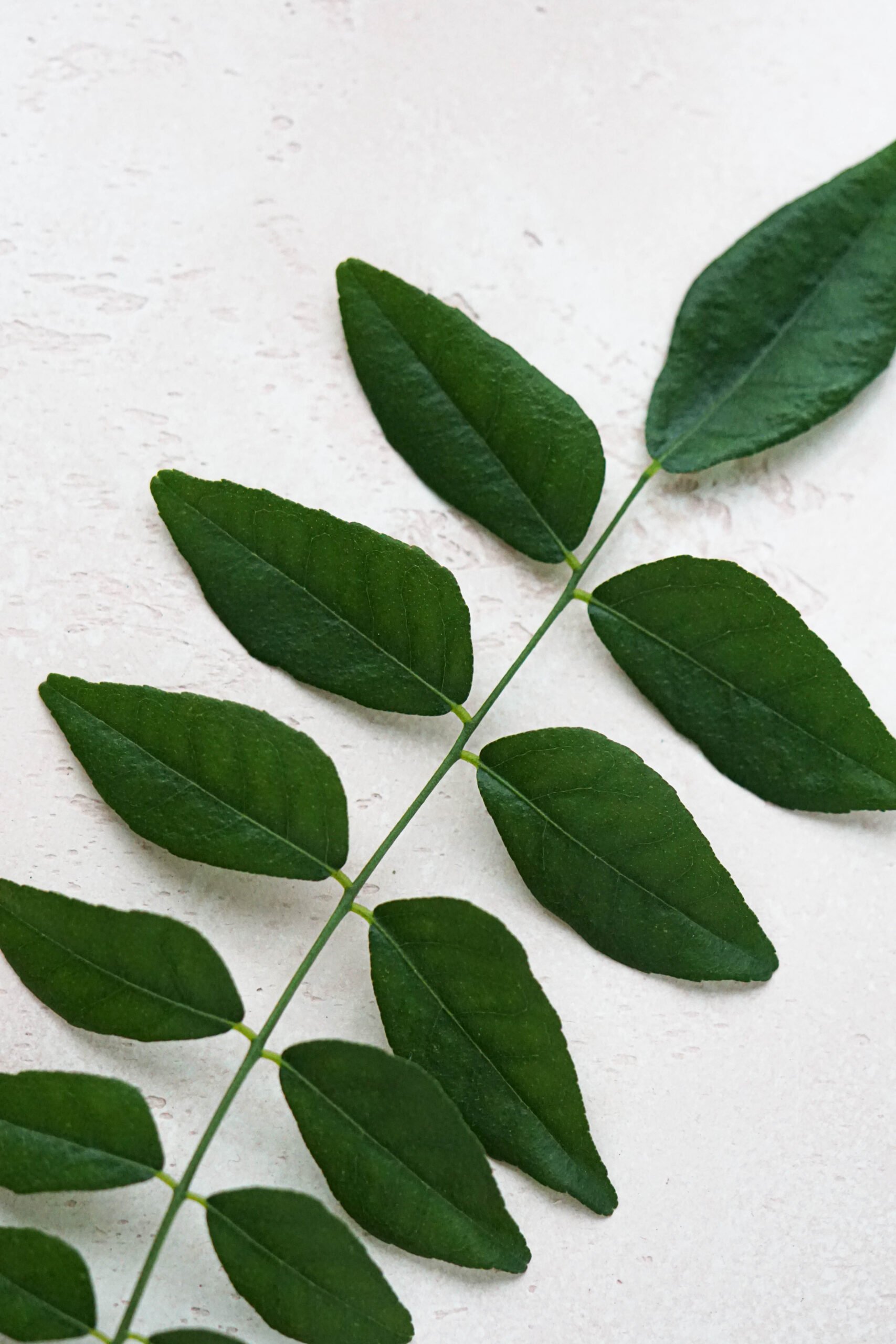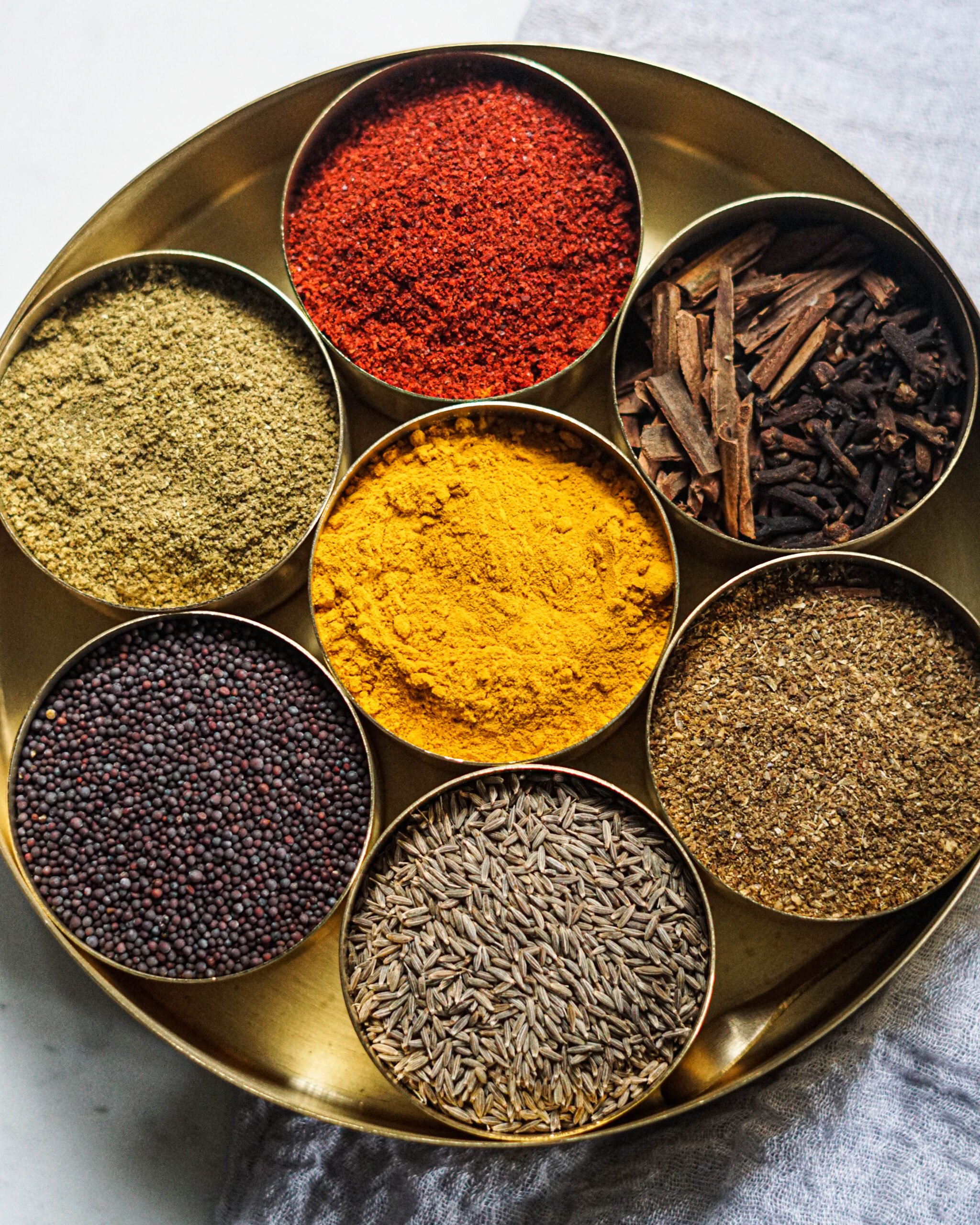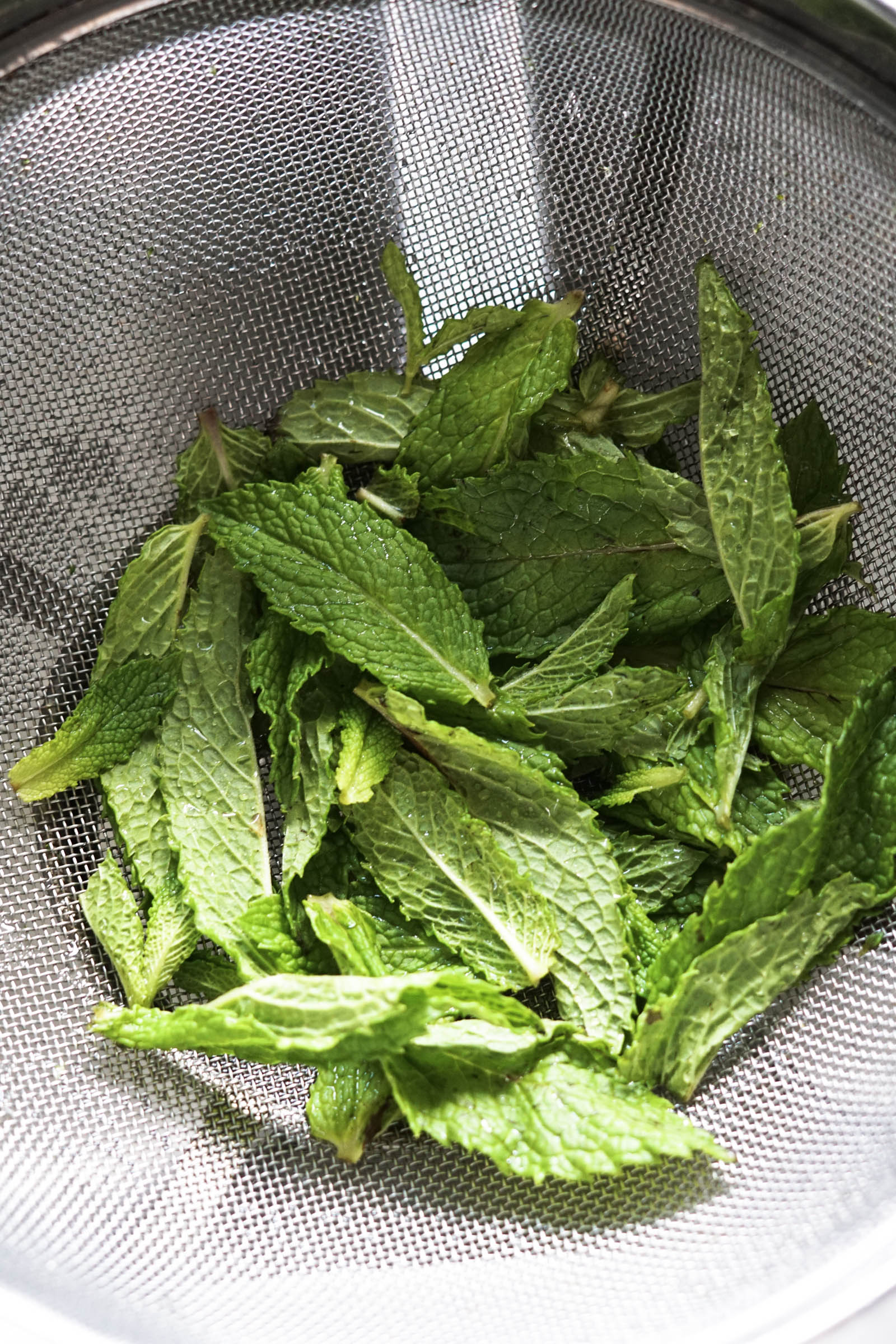Indian Herbs

A guide to Indian herbs used in Indian cookingm. includes a list of Indian herbs, pictures, brief descriptions, and translations from Hindi to help you get more familiar with Indian cuisine!
This overview of Indian herbs goes hand in hand with the beginner’s guide to Indian spices to help you learn about key ingredients.
You can grow many of these at home. Growing a curry leaf plant at home is definitely common in Indian households globally.
Indian herbs play a crucial role in the flavor and aroma of Indian cuisine.

Adding Flavor To Indian Food
The combination of spices plus herbs adds complexity and contrasting textures to Indian dishes. Before diving into herbs, here are a few helpful places to dig into If you’re looking to learn about spices:
Essential Spices: The essential spices to get cooking are those I keep in my Indian spice box or masala dabba.
There is also an extensive spice list with pictures for ease of reference.
Indian Spice Blends: Indian spice mixes are key to a variety of delicious, homemade traditional Indian dishes. They are commonly found across Indian households and are helpful to have on hand for your favorite dish!

Overview of Indian Herbs
Below is a quick summary with more details on each below.
| # | Name | Flavor | Used Dry or Fresh |
| 1 | Bay leaf (Indian) | Warm, sweet, and slightly peppery taste, with notes of clove, cinnamon, and cardamom | Used whole and dried |
| 2 | Cilantro | Citrusy or earthy | Fresh leaves and tender stalks used |
| 3 | Curry leaves | Pungent, notes of citrus | Dry or fresh |
| 4 | Dill | Grassy, citrusy | Fresh |
| 5 | Fennel | Sweet and licorice-like flavor | Dry or fresh |
| 6 | Fenugreek | Nutty and slightly bitter flavor | Fresh or dried (dried leaves are known as kasoori methi) |
| 7 | Holy Basil | Earthy, minty, slight sweet, bitter notes | Fresh |
| 8 | Lemongrass | Citrusy, lemony flavor | Fresh or dried |
| 9 | Mint | Sweet, cool, sharp flavor | Fresh or dried |
| 10 | Moringa | Mild and earthy | Fresh or dried |
1. Indian Bay Leaf
Bay leaf is commonly used in Indian cuisine, especially in the northern and western regions of the country. Comes from Indian cassia tree.
Indian bay leaves are known as tej patta in Hindi. Popular in Moghul or Muglai cuisine in Northern India.
The taste is reminiscent of cinnamon, cloves, and cassia.

They are different from European bay leaves used in Mediterranean cooking. They are and have 3 veins running the length of the leaf as opposed to the single vein that is usually present on a Laurel Bay leaf.
Indian bay leaf is typically sold dried and can be stored in an airtight container in a cool, dry place for up to a year.
Added to hot oil during the cooking process to infuse the dish with flavor.

2. Cilantro
Cilantro, also known as coriander in India, UK, and Asia, is a popular herb in Indian cooking that belongs to the parsley family. It’s a key ingredient that I always have on hand in the fridge.
It is commonly used in Indian, Mexican, and Southeast Asian cuisine.
The fresh coriander leaves and dried seeds (coriander seeds) of the plant are both used in cooking. Ground coriander seeds and ground cumin seeds are used as a spice blend often in Gujarati food, dhana jeeru.

Chutneys: the classic Cilantro Chutney is probably something you are familiar with. Used often as a samosa chutney.
Cilantro has a distinct, pungent flavor that is often described as citrusy or earthy.
It is best used fresh, as the flavor can quickly deteriorate when heated or stored for too long.
3. Curry Leaves (Murraya koenigii or Sweet neem leaves)
(Also Known as Kadi Patta or Curry Patta)
Curry leaves are aromatic leaf that comes from the curry tree (Murraya koenigii), a tropical tree native to India and Sri Lanka. I’d classify it as an essential ingredient!
These leaves are usually sautéed in oil or ghee until they are fragrant and slightly crispy in addition to other spices when making tadka. They add a complex depth of flavor to a dish.

Very commonly used in South Indian cooking, and also in many other regions of India.
Flavor and aroma: Curry leaves have a strong, pungent, and slightly bitter taste with a distinct aroma that is often described as nutty, slightly citrusy, or reminiscent of cumin.
Culinary Uses:
- Used fresh in tadka (tempering of oil)
- Dried curry leaves can be made into a powder or dry chutney
- Curry leaf fine powder is sometimes added to rice dishes for more flavor in South India
These are very easily found in your local Indian grocery store. They are sold in a packet of fresh leaves. If they dry out, don’t worry. You can still add them to tadka or crush and add as a flavor.

4. Dill
Dill is known as “suva” or “shepu” in Hindi and is mainly used in Maharashtrian, Gujarati, and Bengali cuisine.
Indian dill (Anetheum sowa) is a native of Northern India.
Dill isn’t used extensively, but there are a few dishes that use it and it certainly adds a twist to bhajis, dals, and raita.
In Gujarati cuisine, dill is used in a dish called “shepu or suva bhaji,” which is a stir-fry made with dill and lentils.
5. Fennel
Fennel, known as “saunf” in Hindi, is a common ingredient in Indian cooking. It has a sweet and licorice-like flavor.
Fennel seeds are typically served after a meal as a mouth freshener.

Fennel is also used in spice blends, such as garam masala and thandai masala powder.
6. Fenugreek
Fenugreek is known as “methi” in Hindi. In Gujarati cuisine, it is very famously used in Methi Thepla. Those are very popular spiced and fenugreek leaf-filled flat breads. (A personal favorite too!).
Fenugreek leaves, which have a slightly bitter taste, are used fresh or dried. Fenugreek seeds (collected from the pod of the plant) are used as a spice.
Due to it’s unique taste, fenugreek substitutes can be a bit tough to come by but using it in one of it’s three forms is a good place to start.



Have you heard of Kasuri Methi? It’s just dried fenugreek leaves! They are often used crushed and added to dishes.
To make kasoori methi (dry fenugreek leaves) at home, simply dry in the sun and store in an airtight container.
Methi has a nutty and slightly bitter flavor which rounds out the flavor profile of a dish and adds complexity.
7. Holy Basil
Holy basil, known as tulsi. It is a sacred herb in Hinduism.
It is often used in teas and herbal infusions and is believed to have a calming effect on the mind and body.

Tulsi is amongst the most prized plants.
8. Lemongrass
Hare chai ki patti – which translates to green leaves for chai. So, that tells you what this is popularly used for in India!
I’ve used it most often to make lemongrass chai! It adds a delicious lemony flavor.

In Kerala, lemongrass is used in a popular seafood dish called “meen moilee,”
Lemongrass is also used in some Indian teas and herbal infusions.
9. Mint
Mint is known as pudina in Hindi. It’s used popularly from Pudina Chai to flavor the water (pani) in Pani Puri. It has a delightful strong aroma.
Chutneys: Mint is commonly used in Indian chutneys, such as Coriander-Mint Chutney or Mint Yogurt Chutney, which is often served as a condiment with Indian snacks like samosas and pakoras.

Raitas: It is also used to flavor raita, a yogurt-based side dish, as well as in biryanis and curries.
Drinks: In North India, mint is often used to make a refreshing summer drink called “pudina sharbat” or “mint cooler,” which is made by blending mint leaves, sugar, and water.
Rice: Mint rice or pudina rice is a delicious way to pack in mint flavor.
Mint is believed to have cooling properties, which makes it a popular ingredient in summer dishes.

10. Moringa
Known as the “Miracle Tree” or “Tree of Life,” moringa is a plant that is native to India, parts of Asia, and Africa. It is well known for its tasty pods, leaves, and flowers. All parts of the plant can be used.
Moringa leaves have a mild and earthy taste.
The pods are used to make Indian Drumstick or Saragva Nu Shaak.
The leaves can be used to make a Moringa Tea.
I hope you enjoyed this list! The combination of whole spices and fresh herbs are main ingredients in Indian recipes and its fun to explore incorporating new ones into everyday meals.






